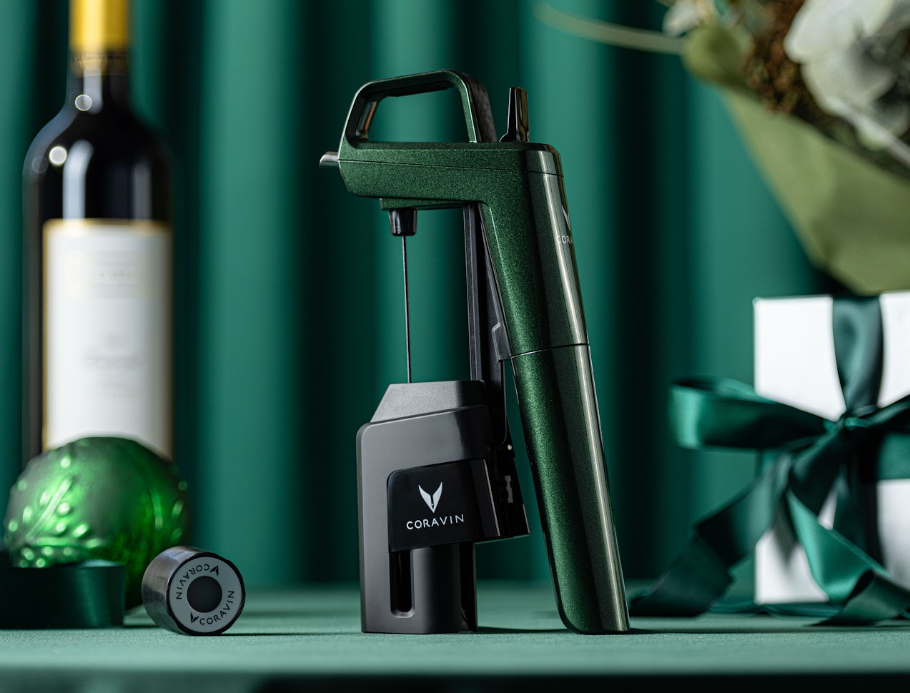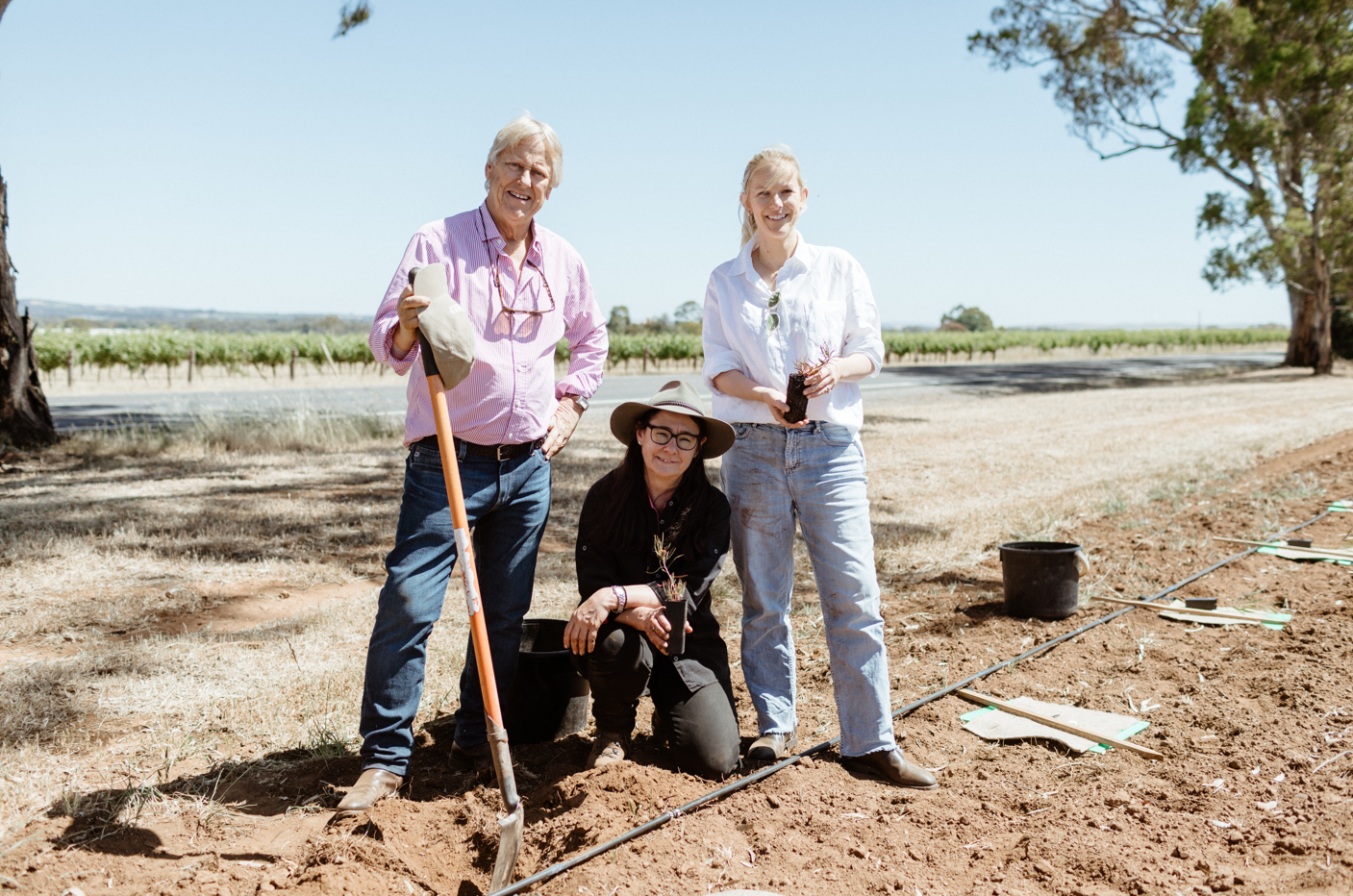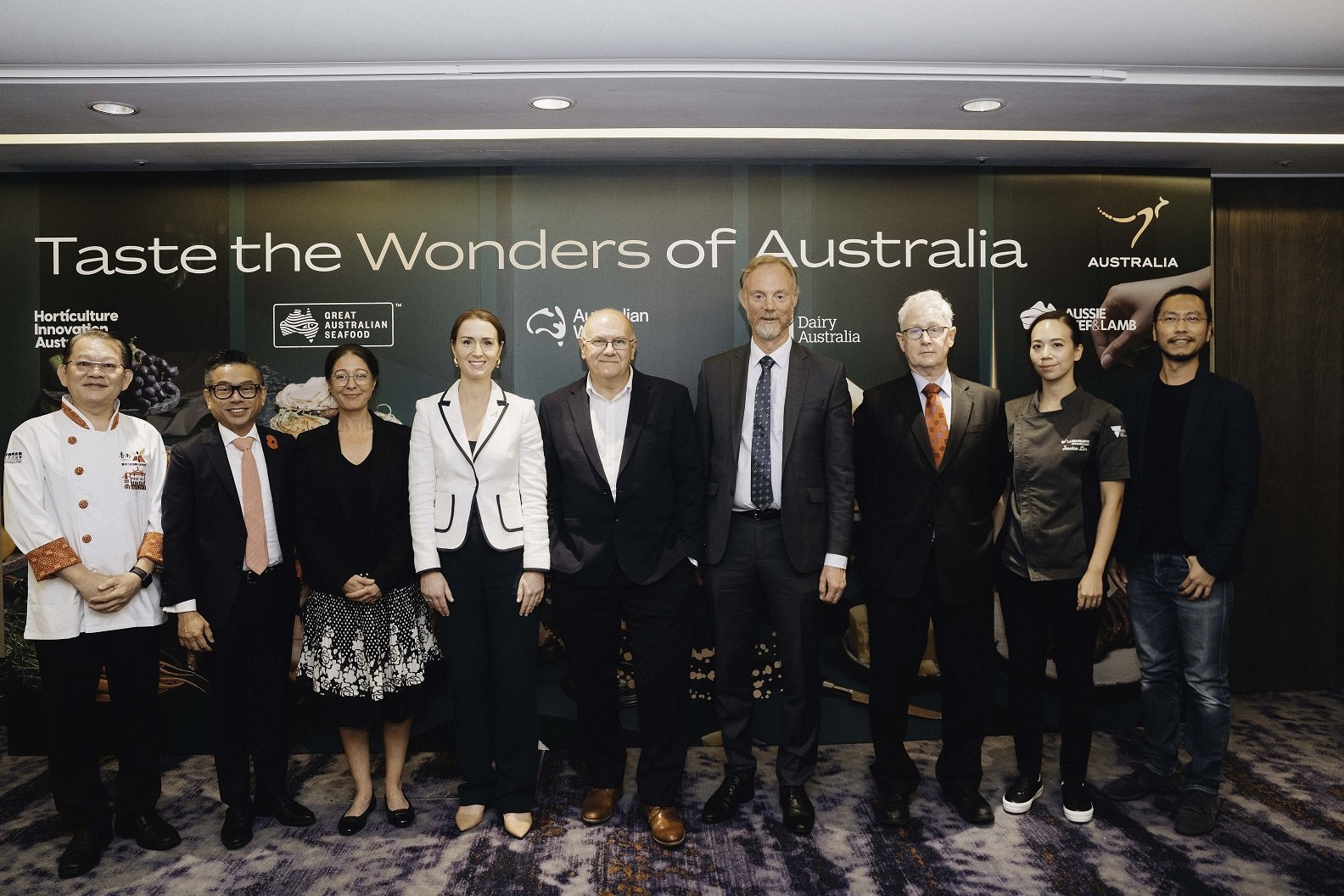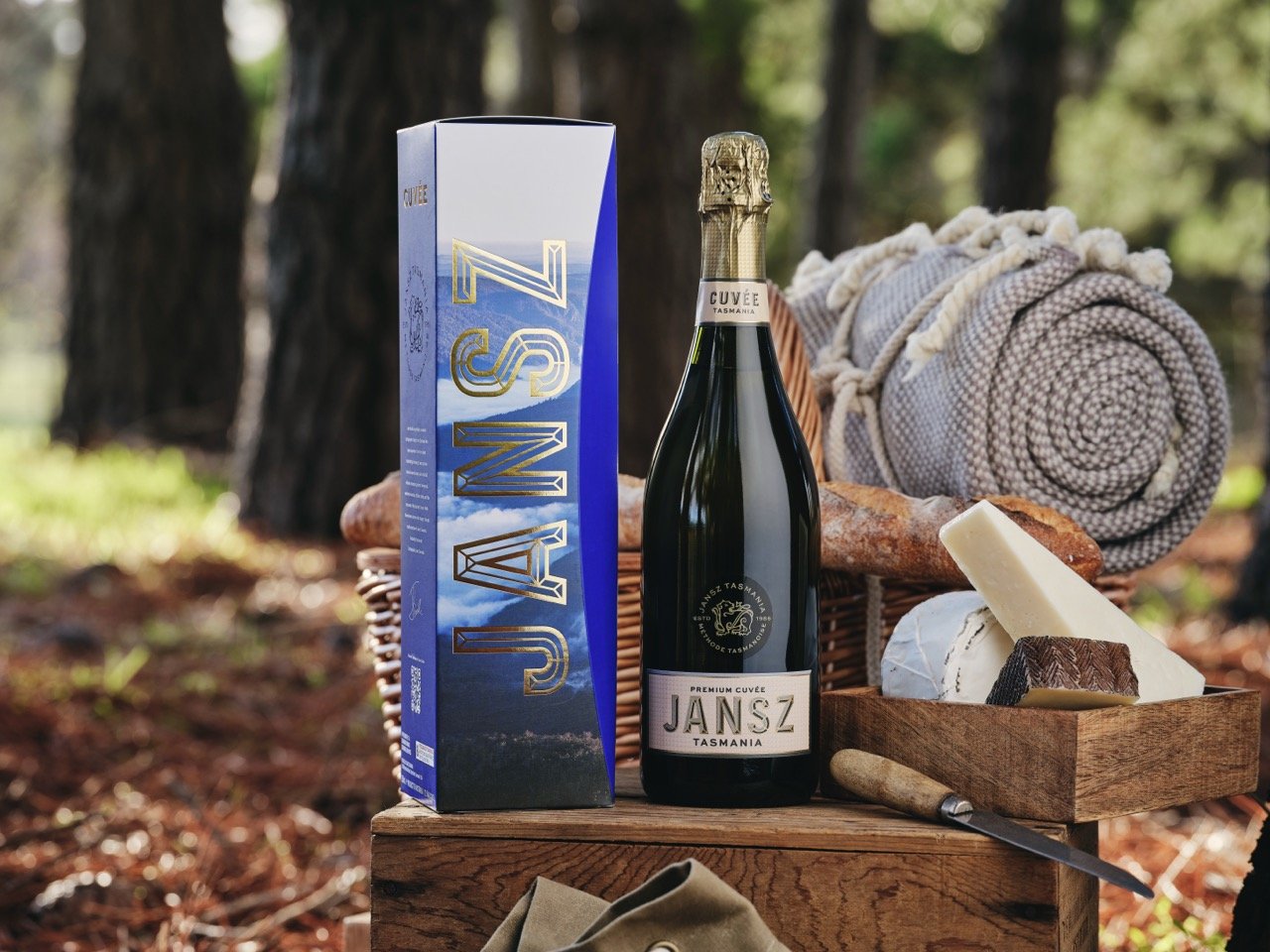Panellists featured above - far left: Sam Payne, second left: Tiago Cardoso da Silva, middle: Alex Retief, second right: Bryson Doak, far right: Jason Bowyer.
Questions about the biggest changes and challenges facing the wine industry were posed at the Wine Communicators of Australia's 'Under the Influence' event this week.
Held at Wine Ark in Sydney, five experienced panellists discussed everything from the significance of social media to changing demographics, the panellists discussed and debated the who, what, when, where and how of influence in the wine scene today.
The panel, led by Ralph Dunning, Chair of the drinks association, included: Jason Bowyer, Buying Director for Wines & Sparkling, ALDI Stores; Bryson Doak, Account Manager at Pernod Ricard; Tiago Cardoso da Silva, co-CEO of The Cheese and Wine Co; Sam Payne, Sommelier, Wine Writer and Wine Consultant; and Alex Retief, Owner and Winemaker for Urban Winery Sydney/ A. Retief Wines.
Upon entering the intimate warehouse located in Alexandria, guests were met with an array of delicious wines and cheeses. After mingling and sipping on panellist Retief’s delicious Petit Verdot, attendees were directed to grab a glass (or two) to enjoy over the panel discussion.
The main insights from the informative panel discussions were that wine demographics are changing, labelling really does make a difference, price can really be just a number when it comes to quality, and the significance of social media.
The importance of knowing your demographic
Sam Payne, who’s been working in the industry for over a decade writing for well-known publications such as Concrete Playground, Broadsheet and Decanter, said she believed demographics have changed significantly.
“We see the change in demographics at wine events. For example Dan Sims who runs the events Pinot Palooza and Game of Rhones. The predominant demographics for those events are 70% women between the ages of 25-35.
“They are THE demographic of drinking wine and also those looking for new trends,” she explained.
Dunning added: “I see that coming out of events such as Wine Island too, which have a demographic much younger than you’d expect.”
Speaking about demographics, Payne also writes wine lists for various restaurants around Sydney. One of her main focus in making these lists is balancing and catering the wines to the demographic the restaurant is located.
“It’s important to take in the context of what is the cuisine is, and what sort of demographic the restaurant sits in; is it in the CBD versus Surry Hills verses Potts Point – things like that.”
Wine labelling – does it really matter?
Bryson Doak has had his fair share working in retail. From his experience he believes wine labelling is extremely important.
“If it looks terrible on the shelf 9/10 consumers aren’t going to buy it. Even with metals and reviews,” he said. “A lot of people want to have a story when they are showing a wine to their family and friends; they want to say ‘look at this great bottle of wine’.
“Now I remember when I was working retail, we sold The Shed, with the combi van on it, and we used to have people come in and ask for ‘the combi van wine’ just because it looked good, yes it was good juice, but it was the looks that sold it."
Payne agreed that packaging is important, but that doesn’t mean it has to be fancy.
“Outdated packaging - when the label is old and tired - is a deal breaker. However, sometimes keeping it simple and plain is good if you’re unsure of what the brand vision is going to be.
“Then you have really artistic wine packaging. There’s a new one from Scorpo, where there is a guy in a gorilla costume holding a naked lady, it is very King Kong-esque and it’s hilarious and wonderful.”
However, Tiago Cardoso da Silva disagreed, stating: “People usually buy wine for an event, or to share with family and friends. So I think that the moment you are sharing wine is actually more important than the actual wine bottle.”
ALDI on good value
Jason Bowyer, who’s had over 20 years in the industry, and is now the buying director for wines and sparkling at Aldi shared insights on the Aldi strategy and mentality.
“The Aldi model, unlike other retailers, has limited offers – it’s about having the best of the best at those price points and making sure they absolutely deliver great value.
“The golden rule we work on is that a $10 wine at Aldi should drink like a standard $20-25 wine to ensure the customer always gets a good experience.
“It’s got to have a purpose and passion, a belief that you are doing the right thing,” Bowyer conveys with intent.
Indeed, earlier this year, ALDI won several awards for its wines and spirits, after an $8 Aldi rose was named one of the best in the world, followed by The One Road South Australian Heathcote Shiraz 2015, which won Wine Of The Year in the Best Value Shiraz category.
He noted a key shift in consumer drinking trends being that “consumers are definitely looking for lighter-styled wines and refreshment”.
“We need to be thinking more about the function of the drink; what do people want to drink? Is variety really that important or should we be making wines that are really about refreshment, have energy and zest in them, people want to come home and rip into a wine and enjoy it.”
The influence of social media
Lastly, Cardoso da Silva discussed the importance of social media.
As co-CEO of a 110K following Instagram @thecheeseandwineco Cardoso da Silva argues that “The social media side of the wine industry is lacking. The name says social not commercial.”
“You have a platform where you have an opportunity to communicate with the customers. When I say it’s social not commercial, I’m talking about the companies that are all about one way communication, telling their customers solely about discounts and so forth.
“But the problem is that people follow a brand because they love it, they want to know who’s making it, they want to know who in the vineyards; is there a dog, or a child running around? That is a two-way communication.
“You can have dialogue and communicate with your followers anywhere on social media. People are looking for some sort of relationship, if you can tell a good story and relate to your followers on social media, your return of investment is definitely better on Instagram," he said.
Wine Communicators of Australia’s (WCA) annual program includes networking events, webinars and its prestigious lunches in association with three major capital city wine shows in Sydney, Melbourne and Adelaide. It also runs the annual Wine Communicator Awards and Legend of the Vine Awards.
See some snaps from the event:
Share the content













